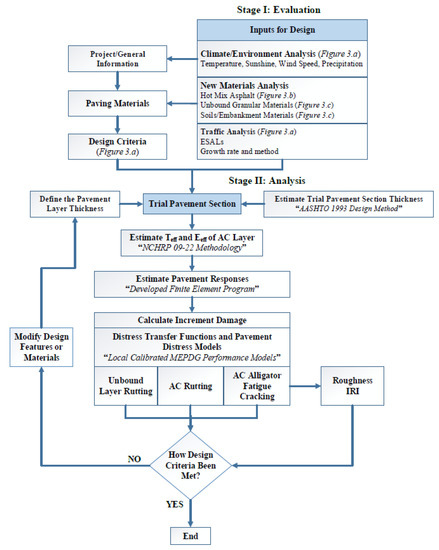

Good 4 PSR’s used to develop design equations to predict Present Serviceability Index (PSI)ĪASHTO Flexible Pavement Design -Design NomographĪASHTO Flexible Pavement Design Factors 4 Design life 4Analysis period 4Performance Period 4Period by which pavement reaches terminal PSI 4Performance Period Analysis Period 4 Reliability (Z R ) & standard deviation (S 0 ) 4 Traffic loading 4Estimated cumulative traffic in 18-kip Equivalent Single Axle Loads or ESAL’s (W 18 ) 4 Effective roadbed resilient modulus (M R )ĪASHTO Design Factors - Analysis Period Highway ConditionAnalysis Period (Years) High Traffic - Urban Highwa圓0-50 High Traffic - Rural Highway20-50 Low Traffic - Urban Highway15-25 Low Traffic - Rural Highway10-20ĪASHTO Design Factors -Reliability & Standard Deviation Design Reliability Functional ClassificationRecommended Reliability UrbanRural Interstate or other freeways85-99.980-99.9 Principal arterials80-9975-95 Collectors80-9575-95 Local roads50-8050-80 Standard Deviation CategoryStandard Deviation Performance prediction0.35 Other factors0.10ĪASHTO Design Factors -Traffic Loading 4 Expressed in Equivalent 18-kip Single Axle Loads, or ESAL’s.

1960 (1,114,000 axle loads) 4 74 flexible & 49 rigid pavement sectionsĪASHTO Road Test Major Findings for Flexible Pavements 4 Performance of base material (best to worst) asphalt treated, cement treated, untreated crushed stone, untreated gravel 4 Rutting and cracking were the major distresses 4 90% of rutting occurred in pavement layers: 32% in surface, 14% in base, 45% in subbase 4 More surface cracking during colder weather 4 Pavement deflections greater during spring than during summer (due to higher moisture levels)ĪASHTO Road Test 4 Based on Pavement Serviceability concept –Serviceability was defined as the ability of a pavement to serve its intended function under existing conditions 4 During the test, road users rated pavements –Pavement Serviceability Rating (PSR) –Based on the pavement roughness –0-1:V. Pavement Distresses Longitudinal Cracking Transverse CrackingĪASHTO Road Test 4 AASHTO: American Association of State Highway and Transportation Officials 4 Objective: To relate axle load repetitions, pavement design configurations & distresses 4 Test sections constructed in 1956 on I-80 in Ottawa, Illinois (80 miles southwest of Chicago) 4 Cost $ 27 million 4 Test pavements subjected to test traffic between Oct. Pavement Distresses Rutting Alligator Cracking Mechanistic Design Pavement Stresses Due to Tire Load

Types of Pavement Design Approaches 4 Empirical methods based on –Strength test (CBR) –Classification (soil classification) 4 Limiting shear failure methods 4 Limiting deflection methods 4 Regression methods based on Road Tests –AASHTO road test 4 Mechanistic-Empirical methods –Mechanistic model predicts stresses, strains, deflections –Regression models to predict pavement life humidity) Materials Failure criteria –Distress types, functional failure level of distress Reliability needed for the pavement Pavement management system –Life cycle cost (costs of construction & maintenance) –Pavement design life Pavement Design Criteria Traffic & loading (axle loads, # of load applications, contact area of load, vehicle speed) Climate (temperature, precipitation, rel. Pavement Design A pavement consists of a number of layers of different materials 4 Pavement Design Methods –AASHTO Method –The Asphalt Institute Method for Flexible Pavements –Portland Cement Association (PCA) Method for Concrete Pavements –Texas DOT Method –Other methods Presentation on theme: "Pavement Design A pavement consists of a number of layers of different materials 4 Pavement Design Methods –AASHTO Method –The Asphalt Institute Method."- Presentation transcript:


 0 kommentar(er)
0 kommentar(er)
